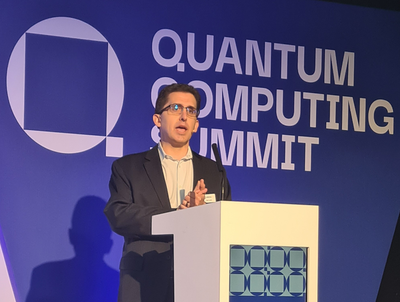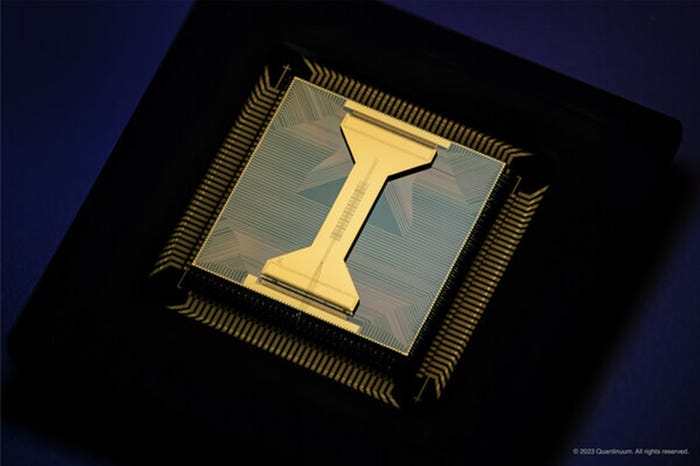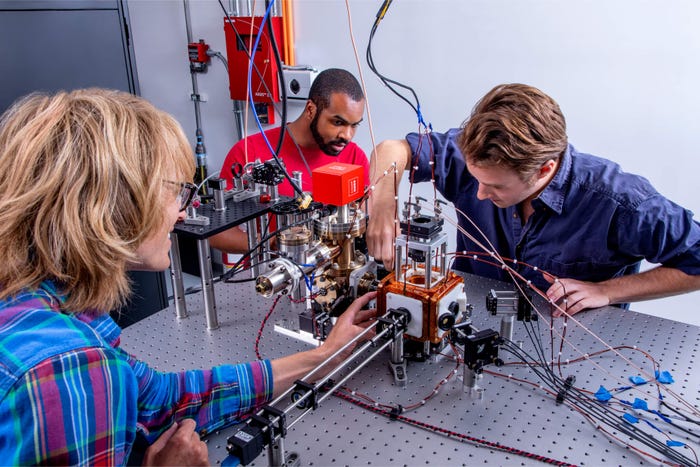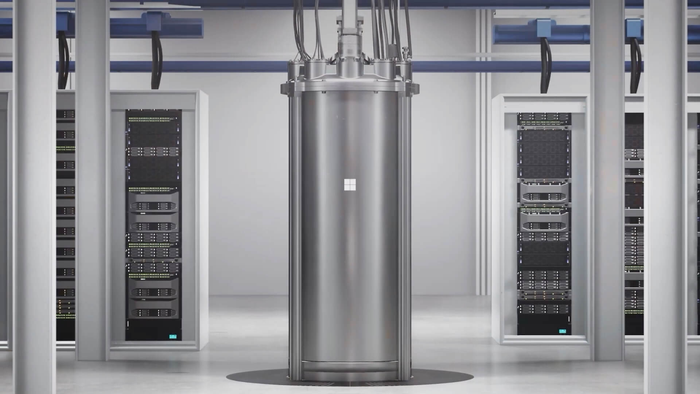
Connects decision-makers and solutions creators to what's next in quantum computing
SPONSORED - Paths to Quantum Advantage: Omdia with MicrosoftSPONSORED - Paths to Quantum Advantage: Omdia with Microsoft
Fault tolerance is vital to scaling quantum to solve complex business challenges
November 9, 2023

Charting progress towards quantum advantage is challenging, not least due to a lack of clarity on its definition. Microsoft has commissioned a report with research company Omdia that examines why it is a challenge and how the industry might find benefit using a framework to think about progress towards quantum advantage.
Quantum computing may one day enable solutions to perform computational challenges that classical computing will never find traction on – at least not on any human-relevant timescale. While this would lead to significant downstream scientific and technological breakthroughs (from responding to climate change to finding new medicines), achieving this kind of “quantum advantage” is not certain and difficult to measure as a series of interim goals.
While the phrase ‘Quantum advantage’ is used to denote quantum computers’ ability to outperform classical computers, it is used in different ways and contexts, confusing adopters about the current and possible future capabilities of quantum computing, and what timelines they can expect.
No company wants to be at a disadvantage if and when quantum computing technology passes a quantum advantage inflection point. If nothing else, the recent and sudden prominence of generative AI and the resulting scramble among executives to determine their “ChatGPT play” has been an object lesson on the need to prepare to run the race before the race actually starts.
In some limited cases, however, adopters do claim to find an advantage today, even with current noisy, intermediate-scale quantum (NISQ) quantum computers. A recent Omdia survey found that 29% of respondents said that their organization already sees a commercially relevant advantage to using quantum computers. This is a surprising result and one that drives to the heart of the challenge facing the industry of just how we determine when we have a quantum advantage.
Download the full report here: In Pursuit of Fault-Tolerant Quantum Computing.
Breaking Down the Quantum Advantage
Omdia believes that quantum advantage can be decomposed into three consecutive and increasing levels of capabilities relative to classical computing:
• Commercial advantage is in the eye of the beholder, when an adopter believes they receive some commercial benefit to using quantum computing compared with the traditional classical computing solution they would normally use.
• Computational advantage is more objective but still, in many or most cases, empirical rather than formally provable or absolute.
• Tractability advantage is what many people think of as quantum advantage ― the point at which no classical supercomputer could conceivably match the results of a quantum computer, at least on human-relevant timescales. It will almost certainly take a fault-tolerant quantum computer to achieve this, and most estimates are that this will require another 10 or more years to develop.
For example, one air cargo transport company conducted a test using historical logistical data in which a quantum computer was able to show how to successfully load and transport the 20% of cargo in the dataset that the classical logistics system had been unable to allot space for on the planes.
Quantum Tractability Advantage and Microsoft’s Goal
While isolated examples of quantum commercial advantage are periodically announced, these are very far from the full potential of quantum computing if fault-tolerant quantum computers are achievable. Commercial advantage might provide an incremental benefit on a case-by-case basis, but will not be the inflection needed to, for example, meet Microsoft’s aspirational goal to “compress the next 250 years of scientific discovery into the next 25.” For that, the industry will need to achieve a quantum tractability advantage.
A possible way for the industry to benchmark efforts in the FTQC regime is encompassed by Microsoft Azure Quantum’s proposal for the “reliable quantum operations per second” (rQOPS) metric and Quantum Computing Implementation Levels framework:
The framework contains three sequential levels:
• Level 1—Foundational: the current state of QC technological development, which relies on small-scale computation directly on physical qubits. Omdia believes the probability of ultimately passing out of Level 1 to achieve working logical qubits with error rates below physical qubits is high; we estimate the probability at above 90%.
• Level 2—Resilient: Quantum systems that operate on effective, reliable logical qubits.
• Level 3—Scale: Quantum supercomputers that can solve impactful problems that even the most powerful classical supercomputers cannot – the achievement of the “quantum tractability advantage.”
See the full report to read more about the rQOPS measure and the industry challenges ahead.
The full report, In Pursuit of Fault-Tolerant Quantum Computing, introduces Microsoft Azure Quantum’s proposal for the “reliable quantum operations per second” metric and Quantum Computing Implementation Levels framework. Download it on Omdia’s website here.
About the Author
You May Also Like






